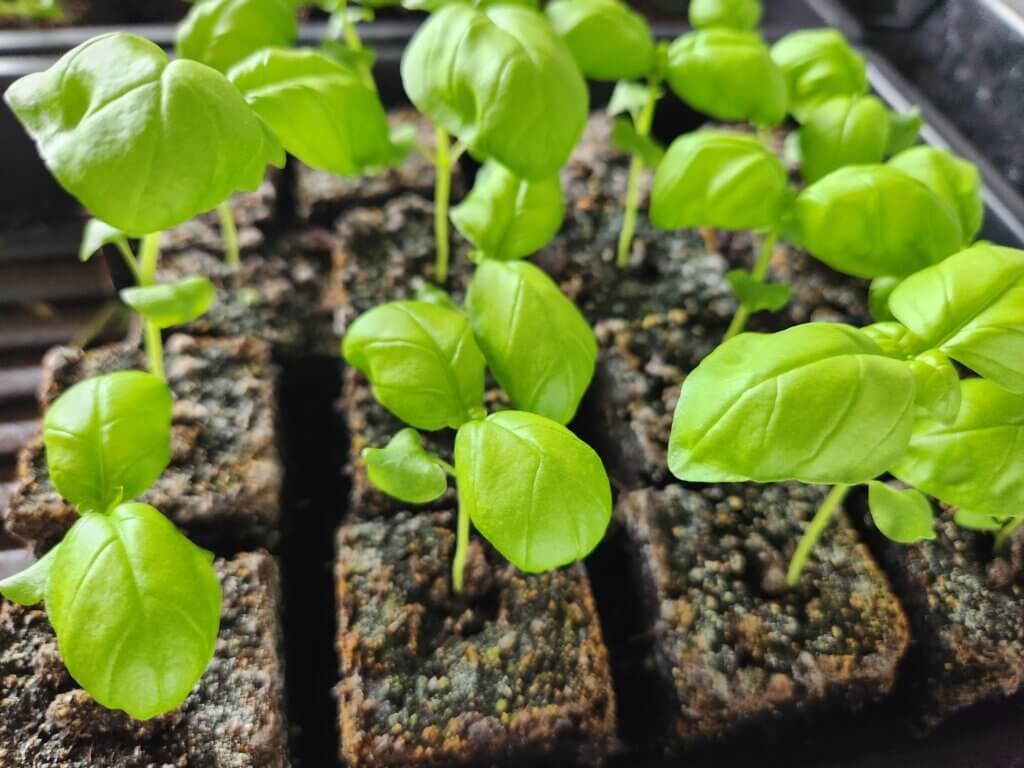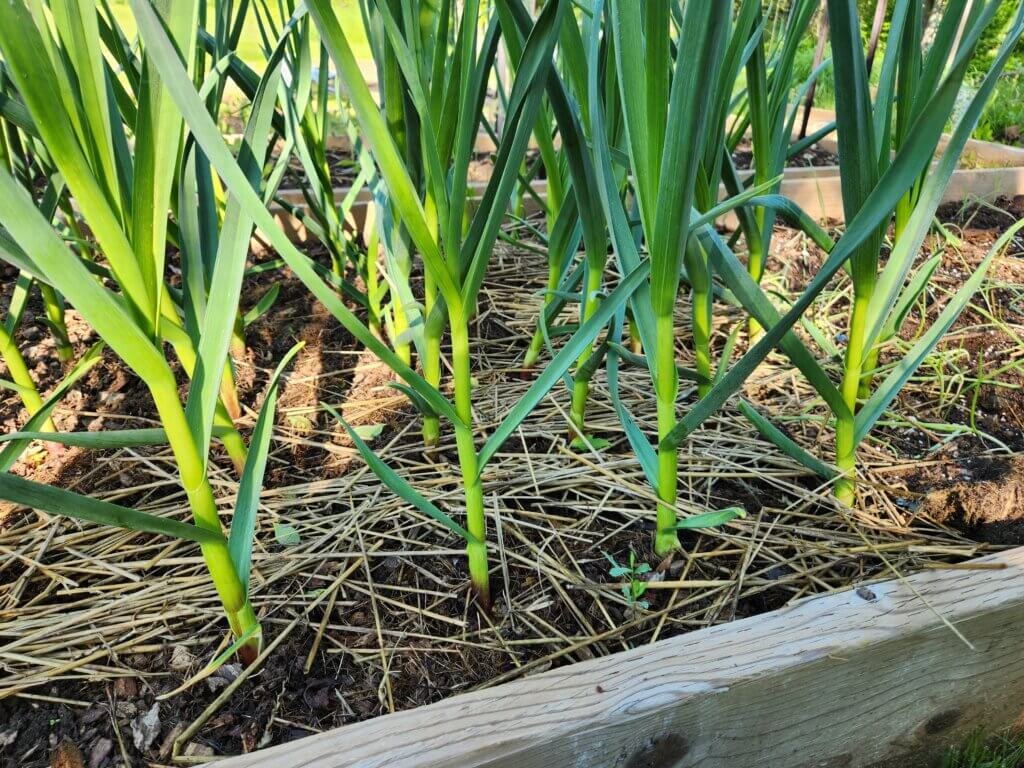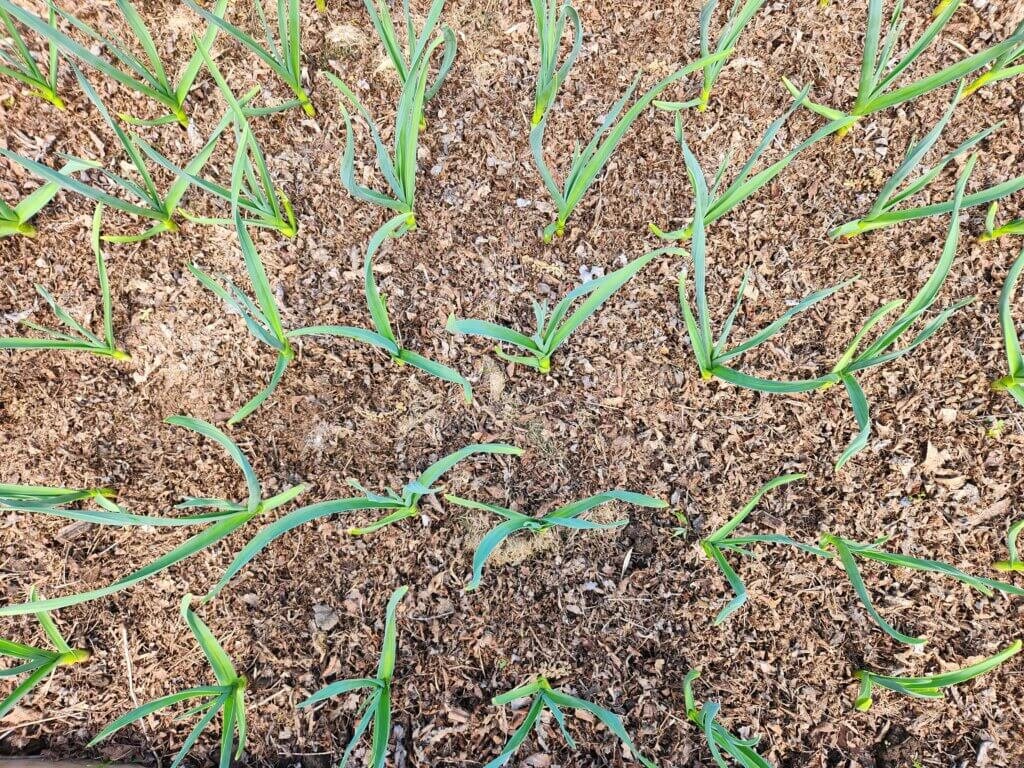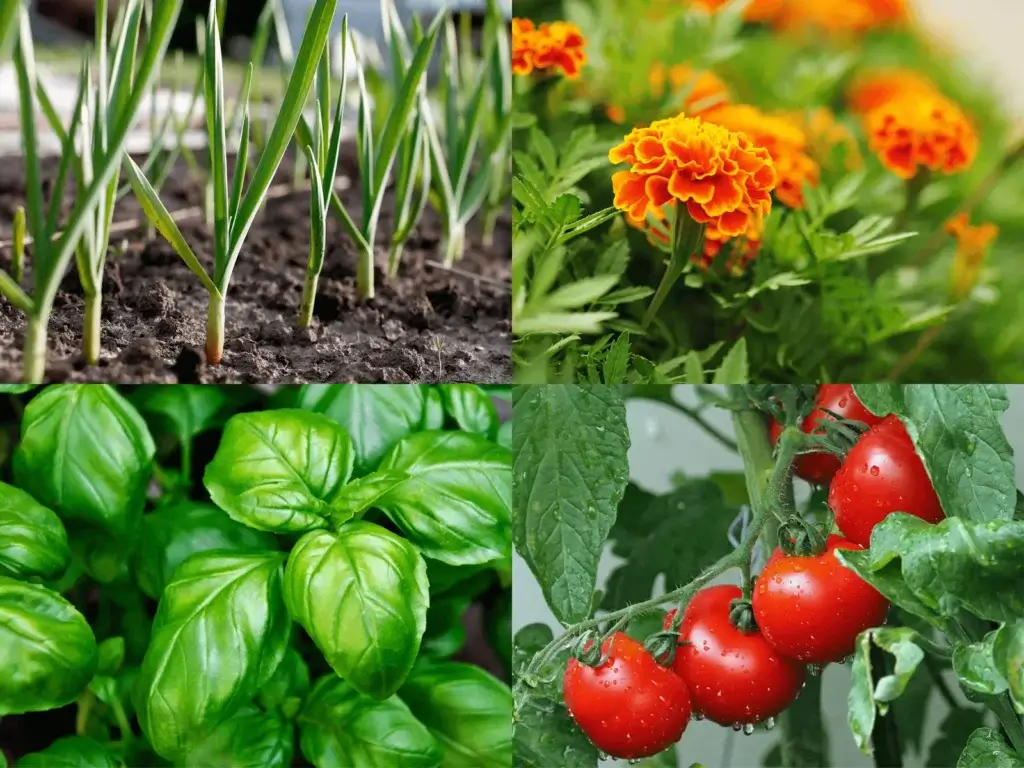When it comes to growing juicy, vibrant tomatoes, the right companions in your garden can make all the difference. Companion plants for tomatoes not only improve tomato health and yield but also reduce pests, enrich the soil, and even enhance flavor. If you’ve ever wondered which plants are most beneficial to grow alongside your tomatoes, you’re in the right place.
This post may contain affiliate links. If you use these links to buy something we may earn a commission. Thanks.
In this article, we’ll highlight the three best companion plants for tomatoes and explain exactly why these garden allies work so well together. Whether you’re a beginner gardener or a seasoned green thumb, these companion planting tips will elevate your tomato harvest.
Why Companion Planting Works for Tomatoes
Tomatoes are heavy feeders and somewhat fussy plants that benefit from a supportive garden ecosystem. Companion planting leverages natural plant relationships to:
- Create a natural pest control system
- Attract beneficial insects and pollinators
- Improve soil nutrients and structure
- Maximize limited garden space
- Reduce disease spread through diversity
By choosing the right companions, you can reduce the need for chemical fertilizers and pest control while boosting your tomato yield.
Companion Plant #1: Basil, A Tomato’s Best Friend
If you’ve ever heard that basil is one of the best companion plants for tomatoes, it’s not just garden folklore, there’s real science behind it. Basil doesn’t just make your pasta sauce better; it also protects your tomato plants from common pests using a fascinating bit of plant chemistry.
How Basil Naturally Repels Pests from Tomato Plants?
It All Starts with Aroma: Volatile Organic Compounds
Basil produces volatile organic compounds (VOCs) aromatic oils that give basil its signature scent. These compounds aren’t just pleasing to us; they serve as basil’s natural pest defense system. Some of the key VOCs include:
- Linalool – repels whiteflies, aphids, and mites
- Eugenol – also found in cloves; deters soft-bodied insects
- Citral and citronellol – well-known natural insect repellents
These compounds evaporate into the air and create a chemical barrier around the plant. When pests like aphids or tomato hornworms are hunting for tomatoes, the strong scent from basil confuses their sense of smell and throws them off the trail.
Basil Masks Tomato Plant Scents
Tomatoes give off their own scent signatures that pests use to find them. Basil’s stronger aromatic profile can overpower and mask these signals. This effect is called associational resistance. When one plant helps protect another by changing the way pests perceive their environment.
Attracts Beneficial Predators
Basil doesn’t just repel pests, it invites the good guys. Its flowers attract pollinators like bees, as well as helpful insects such as:
- Parasitic wasps that lay eggs in hornworm larvae
- Hoverflies that feed on aphids
- Ladybugs that keep soft-bodied insect populations in check
So not only does basil hide your tomatoes from pests, it also recruits insect allies to patrol the garden.
A Living Pest-Repellent Spray
Think of basil as a natural pest-control fog machine. By simply existing near your tomatoes, it creates a protective aromatic shield. No harsh chemicals or sprays needed. It’s a smart, low-maintenance way to protect your plants and improve their health naturally.

Benefits of Basil as a Companion Plant:
- Repels pests like aphids, whiteflies, and hornworms
- Enhances tomato flavor when grown nearby
- Attracts pollinators and beneficial insects
- Compact growth allows close planting without competition
Tips for Growing Basil with Tomatoes:
- Plant basil around the base of tomato plants
- Pinch off basil flowers to encourage leaf growth
- Harvest basil regularly to keep it from going to seed
Learn more about growing basil by reading our how to grow basil article, how to save basil seeds article, and how to propagate basil article.
Companion Plant #2: Marigolds, The Pest-Deterrent Powerhouse
How Marigolds Help Protect Tomatoes from Pests
Marigolds are more than just a pop of color in the garden. They’re one of the most effective companion plants for tomatoes. When planted nearby, these vibrant blooms act like a natural pest control squad, guarding your tomato plants from above and below the soil.
Natural Insect Repellent: Terpenes and Thiophenes
Like basil, marigolds release a variety of volatile organic compounds (VOCs) as well, most notably terpenes like limonene and ocimene, which repel insects. But what really sets marigolds apart is their production of thiophenes, sulfur-containing compounds that are toxic to many soil-dwelling pests.
Marigolds help repel or reduce populations of:
- Tomato hornworms
- Aphids
- Whiteflies
- Root-knot nematodes
The scent of marigolds acts like a natural bug deterrent, driving away soft-bodied insects and even confusing pest behavior patterns.
Root Zone Protection Against Nematodes
One of the lesser-known superpowers of marigolds lies underground. Certain varieties, especially French marigolds (Tagetes patula), secrete compounds from their roots that suppress root-knot nematodes. Microscopic roundworms that attack tomato roots and stunt plant growth.
This makes marigolds an excellent perimeter plant for protecting the root systems of tomatoes and other veggies.
Attracts Pollinators and Predator Insects
Marigolds’ bright, daisy-like flowers are irresistible to beneficial insects such as:
- Hoverflies
- Ladybugs
- Parasitic wasps
These predators help reduce aphid, whitefly, and caterpillar populations naturally. So not only do marigolds repel pests, they also support the beneficial insect population in your garden.
Marigolds Are Low-Maintenance Bodyguards
Marigolds are easy to grow, drought-tolerant, and bloom all season long. Simply inter plant them throughout your tomato beds, and let them do the heavy lifting in pest control, no chemicals required.

Benefits of Marigolds:
- Deters nematodes in the soil that damage tomato roots
- Repels aphids, tomato hornworms, and whiteflies
- Bright blooms attract pollinators
- Adds a splash of color to the garden
How to Grow Marigolds With Tomatoes:
- Choose French marigolds for the best pest control
- Inter plant marigolds throughout your tomato rows
- Removing spent blooms will encourage the growth of new flowers.
Companion Plant #3: Garlic, The Disease Fighter
How Garlic Defends Tomato Plants from Pests and Disease
Garlic may be humble in appearance, but it’s one of the most powerful companion plants for tomatoes thanks to its pest-repelling properties and ability to fight off disease. While it might not boast showy blooms, garlic’s quiet strength lies in its chemistry.

Sulfur-Rich Compounds: Nature’s Pest Deterrent
Garlic bulbs and foliage release sulfur-based compounds, especially allicin, when crushed, damaged, or simply growing. These compounds serve as a natural insect repellent and antimicrobial agent. The smell alone is enough to drive off many soft-bodied insects.
Garlic helps repel:
- Aphids
- Spider mites
- Fungus gnats
- Cabbage loopers
- Japanese beetles
When planted near tomatoes, garlic creates a sort of chemical shield that deters pests from settling in the area.
Anti-Fungal Protection in the Soil
Garlic doesn’t just stop pests, it also inhibits fungi and pathogens. The sulfur compounds in garlic have natural anti-fungal properties that help prevent common tomato diseases such as:
- Early blight
- Downy mildew
- Powdery mildew
This makes garlic an excellent soil conditioner and immune booster for tomatoes.
Disrupts Pest Communication
Many insect pests rely on scent trails and pheromones to communicate or find plants. Garlic’s potent aroma disrupts these scent trails, making it harder for pests to locate and coordinate an attack on your tomatoes.
Perfect Perimeter Planting
Garlic is well-suited to border planting. You can plant garlic cloves along the edges of tomato beds without crowding the main crops. It grows tall and slender, so it doesn’t compete for light or space, and it rewards you with flavorful bulbs come harvest time.

Benefits of Garlic:
- Repels spider mites, aphids, and other harmful insects
- Has anti-fungal properties that reduce soil-borne diseases
- Easy to grow around the perimeter of tomato beds
- Can be harvested without disturbing tomato roots
How to Grow Garlic with Tomatoes:
- Plant garlic in early spring or fall for best results
- Leave enough space so both plants get adequate airflow
- Harvest garlic once the tops begin to yellow and fall
For garlic growing tips check out our How to Grow Garlic Guide for a more in depth look at growing garlic. We also have information on Health benefits of garlic and our garlic tincture recipe.
Helpful Articles to Help You Grow Tomatoes Better:
- Tomatoes: A Weed or Invasive Species?
- How To Grow Tomatoes From Seed To Harvest.
- Common Tomato Diseases And How To Fix Them
- A Simple Way To Save Tomato Seeds
- When and How to Transplant Tomato Seedlings
Frequently Asked Questions About Companion Plants For Tomatoes
Yes, tomatoes and peppers are compatible, though they can compete for nutrients. Tomatoes and cucumbers, however, share similar pests and diseases and are best planted separately.
Avoid planting tomatoes near brassicas (like cabbage and broccoli), fennel, potatoes, and corn, as they either stunt tomato growth or attract harmful pests and diseases.
Yes, many gardeners swear by companion planting. While not a magic bullet, the right plant combinations can significantly reduce pest issues and improve crop health naturally.
Absolutely! Basil, garlic, and even compact marigolds grow well alongside tomatoes in containers. Just ensure each plant has enough room, light, and nutrients to thrive.
Conclusion
Planting the right companion plants for tomatoes can transform your garden from good to great. Basil, marigolds, and garlic are more than just flavorful or pretty additions—they’re strategic allies in cultivating healthy, productive tomato plants. Whether you’re trying to ward off pests, improve soil health, or maximize your growing space, these three companions offer natural solutions for a thriving tomato crop. Try them in your next planting season and enjoy the benefits of a well-balanced, companion-planted garden.
We hope you enjoyed this companion planting growing guide. If you did make sure you check out the other growing guides, seed saving guides and our recipes. We are growing our website with more articles all the time, and we invite you to grow with us. Whether you’re a seasoned gardener or just starting out, growing tomatoes can be an enriching experience. If you have any questions or want to share your tomato-growing journey, feel free to leave a comment below. Happy gardening!
Sources
- U.S. National Library of Medicine – PubChem
Overview of insect-repelling compounds found in basil, such as linalool and eugenol.
https://pubchem.ncbi.nlm.nih.gov - Isman, M.B. (2000). Plant essential oils for pest and disease management. Crop Protection, 19(8-10), 603–608.
Discusses the insecticidal activity of essential oils, including basil’s compounds.
https://doi.org/10.1016/S0261-2194(00)00079-X - University of Florida IFAS Extension – Companion Planting Guide
Notes basil’s role in repelling tomato pests and improving plant health.
https://edis.ifas.ufl.edu/publication/VH021 - Iowa State University Extension – Companion Planting for Vegetables
Describes the use of marigolds to deter aphids and root-knot nematodes.
https://hortnews.extension.iastate.edu/companion-planting-vegetables - Hooks, C.R.R., Wang, K.H., Ploeg, A., & McSorley, R. (2010). Using Marigold (Tagetes spp.) in Nematode Management. Acta Horticulturae, 883, 135–145.
Research on marigolds’ production of thiophenes and nematode suppression.
https://doi.org/10.17660/ActaHortic.2010.883.15 - Oregon State University Extension – Attracting Beneficial Insects
Lists marigolds as an effective flower for drawing beneficial predators like hoverflies and parasitic wasps.
https://extension.oregonstate.edu/gardening/pollinators/attracting-beneficial-insects-your-garden - Ankri, S., & Mirelman, D. (1999). Antimicrobial properties of allicin from garlic. Microbes and Infection, 1(2), 125–129.
Covers garlic’s sulfur compounds like allicin and their effects on microbes and insects.
https://doi.org/10.1016/S1286-4579(99)80003-3 - Rodale Institute – Organic Pest Control: Garlic as a Natural Repellent
Explores garlic’s use in organic farming systems for pest and disease control.
https://rodaleinstitute.org/blog/using-garlic-for-pest-control - University of California Agriculture & Natural Resources – Integrated Pest Management (IPM)
Information on garlic’s role in disrupting insect communication and fungal disease suppression.
https://ipm.ucanr.edu





